The sunny islands of the Canaries are well-known for offering a pleasing warm climate to visitors throughout the winter months. However, this archipelago in the Atlantic Ocean provides much more than relief from the cold weather and a suntan. Its incredible diversity in natural landscapes is simply spectacular; from prehistoric evergreen forests to lunar-style landscapes with lava fields and caldera craters, every day brings something new and exciting to discover.
At Headwater, we offer a variety of self-guided walking holidays that take in the breathtaking landscapes of the Canary Islands. Our Sales Team Leader, Stephanie Johnson, recently returned from a visit to two of these islands: Tenerife and El Hierro. Below, she shares her unique experiences to inspire new visitors, alongside some handy tips to help you make the most of your holiday.
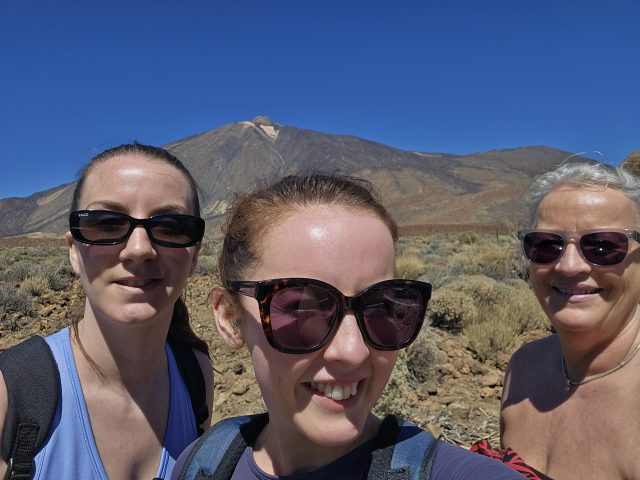
In the centre of Tenerife, Mount Teide stands guard over the island. As the world’s third-tallest volcanic structure, it rises up to an impressive 3,718m above sea level. It’s such a dominant silhouette on the horizon that the native inhabitants of Tenerife, the Guanches, even believed it propped up the sky!
On our Contrasts of Tenerife Walk trip, two days are dedicated to exploring the mighty Mount Teide and its surrounding UNESCO-recognised Teide National Park. One route Stephanie chose to do was the ‘The Best Mirador of Teide’, describing the views as spectacular. There’s a serenity and wild beauty to this exceptional landscape of sunken caldera, lava fields and uniquely shaped rock formations, such as the Roque de Garcia. On a clear day, you can even see across to the neighbouring Canary Islands of Gran Canaria and La Palma from the trail’s peaks.
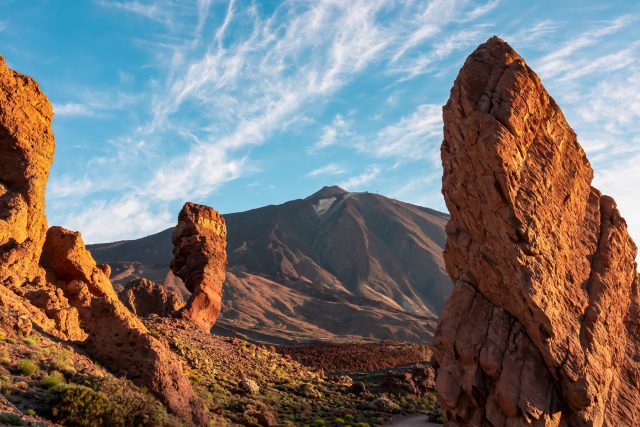
Stephanie recommends this route for beginners. “It’s a short trail, around 4 km,” she explains. “And it’s very well signposted; the route app was almost redundant for this walk.” However, you’ll still need to wear your sturdy walking shoes to negotiate the terrain here. Teide National Park is a volcanic landscape, and as Stephanie highlights, “the paths are rocky, with loose rubble underfoot in places.” Another top tip she offers for exploring Teide National Park is to wear layers so you can adjust to the changes in temperature at higher altitudes.
Navigating the undulating trails is not the only way to get close to the summit of Mount Teide. There is also Teide Cable Car, which offers a more accessible way to near the top. It doesn’t take you right to the summit; a pass is needed for that privilege. However, you exit the terminal only 150 metres short, so there’s no missing out on the breathtaking panoramic views. Stephanie’s advice for getting on the cable car is to get there early, “It gets very busy,” she explains.
Tenerife does not consist entirely of volcanic geography. On the contrary, you’ll find terraced fields and abundant, colourful wildflowers in the north of the island. “It is very pretty and green – a real eye-opener for me,” Stephanie describes. She also explains how the north of Tenerife retains its traditions. In this part of the island, you’ll see traditional farms that still produce the island’s famous goat’s cheese.
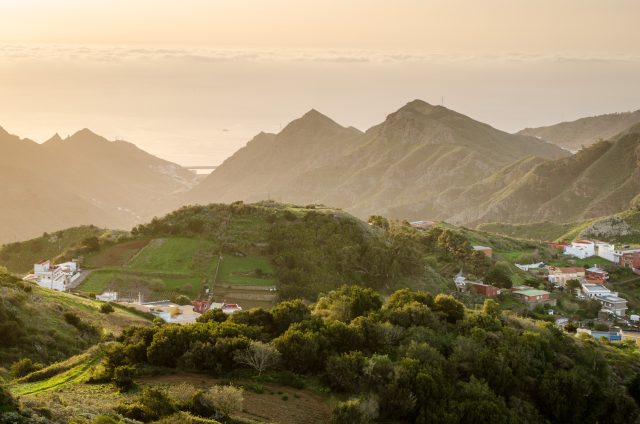
In the first half of our Contrasts of Tenerife Walk trip, you’ll get to discover this picturesque side of the island and stay at the beautifully restored 17th-century nobleman’s mansion, Hotel La Quinta Roja. Meanwhile, our Walking in Tenerife and La Palma trip takes in the Mirador Cruz del Carmen at the northernmost tip of the island, where you can take in the spectacular rain forests and far-reaching views.
Whichever route you choose to explore Tenerife, there are plenty of treasures to uncover. To make the most of your experiences, Stephanie advises starting early in the day. “It can get very hot,” she emphasises, “so always bring plenty of water.”
After walking all day, there are plenty of authentic bars and restaurants to refresh and refuel. “The Canarian Potatoes with Mojo Mojo sauce and gambas are to die for!” Stephanie shares. She also recommends a visit to Hotel Marquesa in Puerto de la Cruz. “The tapas is very traditional and extremely tasty, and it’s a great place to people-watch!”
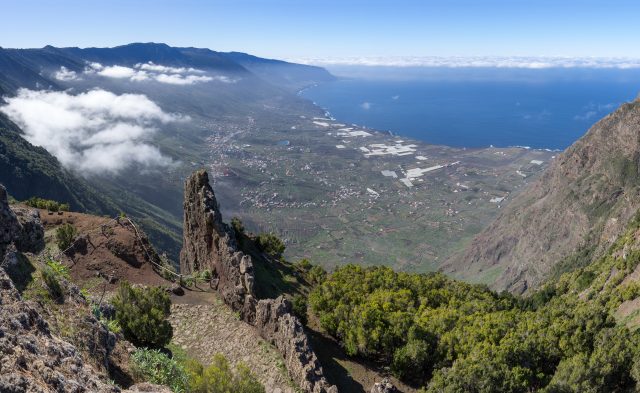
From the most well-known island of the Canaries to the least, having escaped mass tourism, El Hierro is a haven of tranquillity and pristine natural wonders. It is also the smallest of the Canary Islands, with a population of just over 6,500. Stephanie confirms how visiting El Hierro is like going back in time. “We almost expected dinosaurs to appear over the horizon!” she jests.
Nicknamed the ‘Islands of Eternal Spring’, the Canary Islands are known for their stable and pleasant temperatures year-round. Yet, there is some variation in climate across the different islands. Stephanie found El Hierro cooler than Tenerife, “a perfect temperature for exploring.” However, she also cautions that you can experience all seasons within an hour, “a bit like a warm Scotland!”
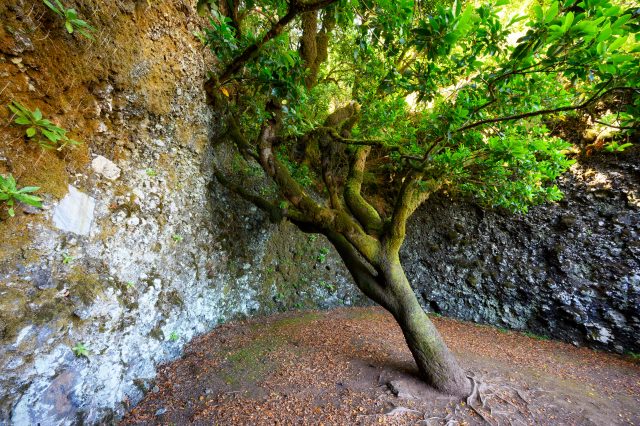
El Hierro is an island rich in traditions and legends. On our Walking in El Hierro trip, you can learn about its stories as you explore some of its significant cultural sites. For example, on day three, you can follow a traditional processional route, taking you past the abandoned village of La Albarrada and down to the Sacred Tree, El Arbol Santo. Well-loved by the native inhabitants of El Hierro, this tree earned its name and notoriety as it’s said that its leaves were once able to collect enough water for the entire island’s population!
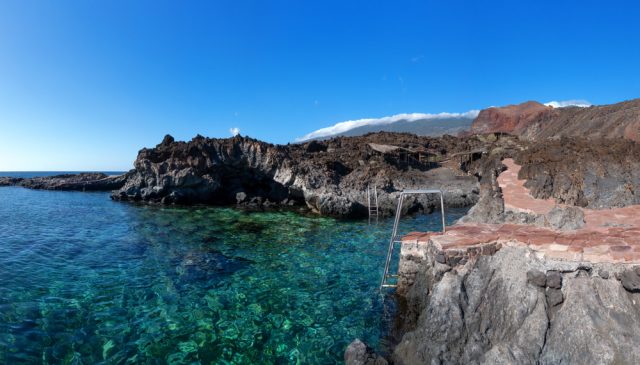
“The views in El Hierro are pretty dramatic,” Stephanie comments. A favourite walking route in El Hierro, and one which she chose to do, begins in the charming town of El Pinar, the gateway to the south of the island. Following the trail featured on our Highlights of El Hierro Walk trip, Stephanie enjoyed navigating the ancient paths down the south coast to the harbour village of La Restinga. Pause here to enjoy a delicious lunch of fresh seafood while listening to the lapping waves. And if this tempts you to have a swim, there is the chance to take a taxi to the secluded cove of Tacoron. Near the aptly named Mar de Las Calmas (calm sea), the Atlantic waters here are gentle, just perfect for a relaxing dip.
When it came to food on the island, Stephanie said, “Our agent bought us some of the local cheese, “Herreno” which is made from the milk of three different animals, goat, sheep and cow. This mild, soft cheese was surprisingly delicious and packed with flavour – I’d recommend that customers try it when they’re visiting El Hierro.”
Other walking highlights in El Hierro include a circular route from El Pinar, featured on our Walking in El Hierro trip. This trail takes in the dramatic volcanic terrain. It then proceeds to meet up with the coastline, ticking off the highlights described above. Also, don’t miss out on visiting Sabinosa – the most western village of the ‘old world’. On this route, you’ll discover the remarkable flat pastoral plateau of La Dehesa and the intriguingly distorted ancient junipers of El Sabinar, regarded as an emblem of the island.
Stephanie sums up her experience of the two Canary Islands she visited as extremely rewarding. While she describes some of the walks as challenging at times, the beauty and authenticity of the landscape, particularly in the north of Tenerife, made it all extremely worthwhile.
Find out more about the range of self-guided walking holidays we offer in the Canary Islands here.